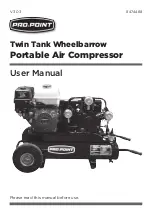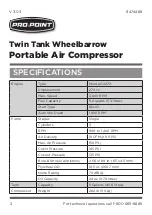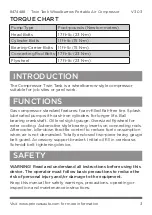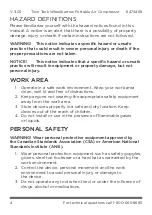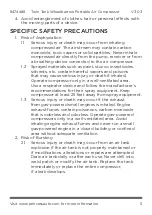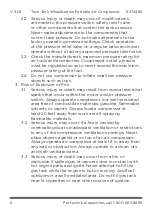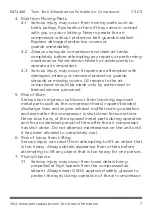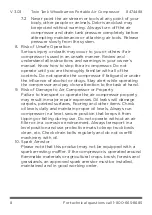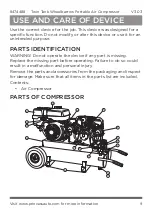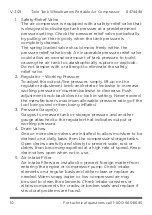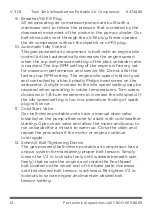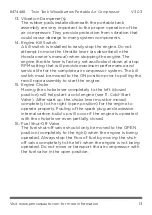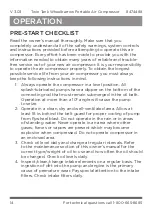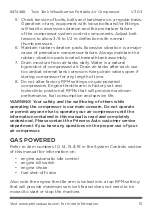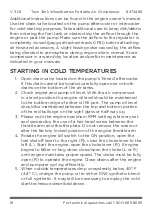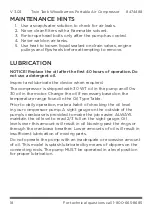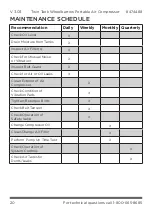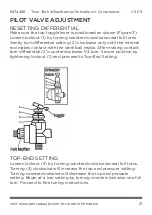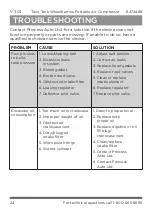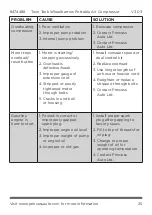
10
For technical questions call 1-800-665-8685
Twin Tank Wheelbarrow Portable Air Compressor
V 3.03
8474488
1. Safety-Relief Valve
The air compressor is equipped with a safety-relief valve that
is designed to discharge tank pressure at a predetermined
pressure setting. Check the pressure relief valve periodically
by pulling on the ring only when the tank pressure is
completely drained.
The spring loaded valve should move freely within the
pressure relief valve body. An inoperable pressure relief valve
could allow an excessive amount of tank pressure to build,
causing the air tank to catastrophically rupture or explode.
Do not tamper with or attempt to eliminate the safety
relief valve.
2. Regulator – Working Pressure
To adjust the output/line pressure, simply lift up on the
regulator adjustment knob and rotate clockwise to increase
working pressure or counterclockwise to decrease. Push
adjustment knob back down to lock in setting. Never exceed
the manufacturer’s maximum allowable pressure rating of the
tool being used or item being inflated.
3. Pressure Gauge(s)
Gauges to measure tank or storage pressure and another
gauge attached to the regulator that indicates output or
working pressure.
4. Drain Valves
One or more drain valves are installed to allow moisture to be
drained on a daily basis from the compressor storage tanks.
Open drains carefully and slowly to prevent scale, rust or
debris from becoming expelled at a high rate of speed. Keep
drain valves open when not in use.
5. Air Intake Filter
Air intake filters are installed to prevent foreign matter from
entering the engine or compressor pump. Check intake
elements on a regular basis and either clean or replace as
needed. Warm soapy water or low compressed air may
be used to clean the elements. Check intake canisters or
elbow components for cracks or broken seals and replace if
structural problems are found.

